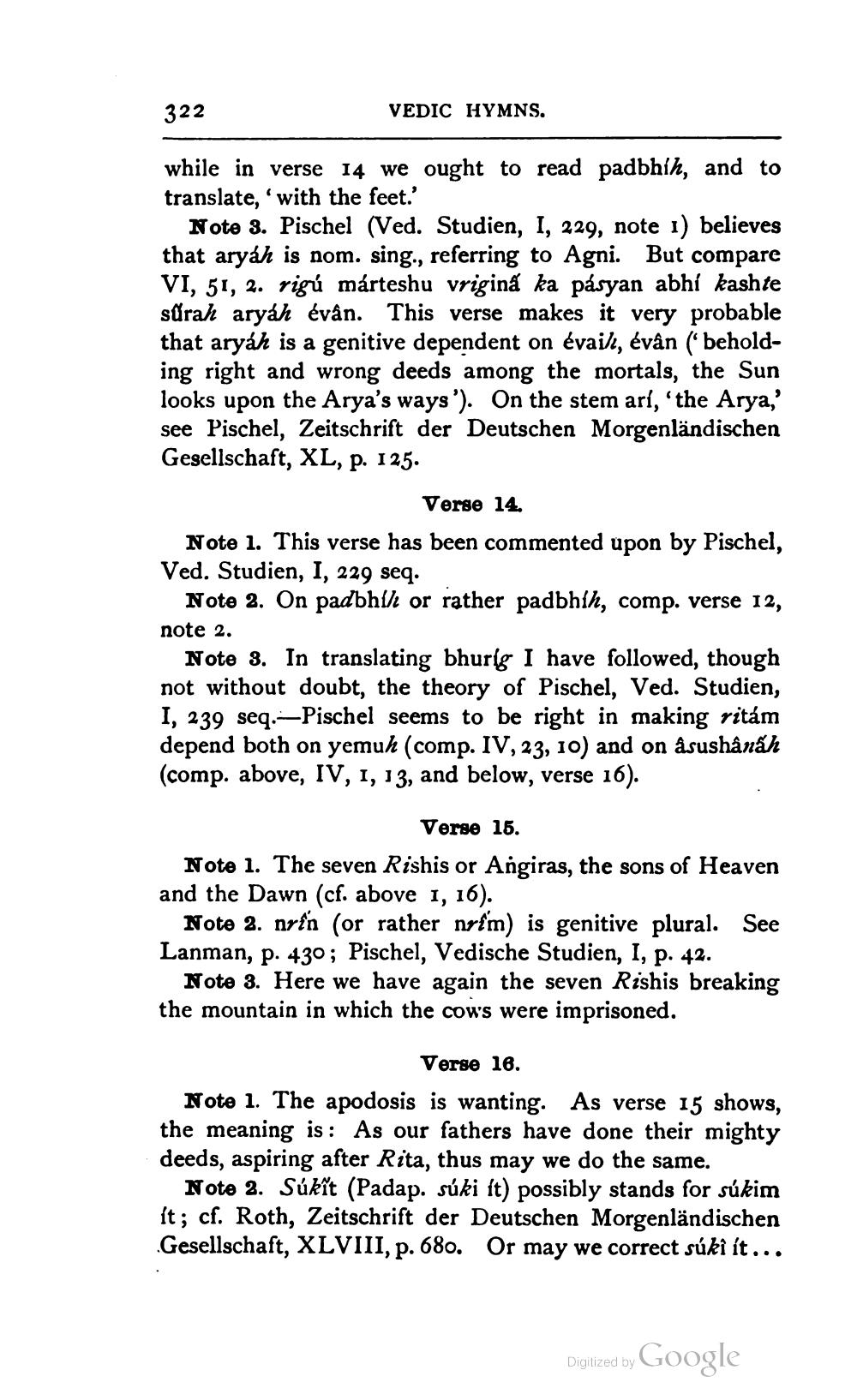________________
VEDIC HYMNS.
322
while in verse 14 we ought to read padbhíh, and to translate, 'with the feet.'
Note 3. Pischel (Ved. Studien, I, 229, note 1) believes that aryah is nom. sing., referring to Agni. But compare VI, 51, 2. rigú márteshu vrigina ka pásyan abhi kashte surah aryák évân. This verse makes it very probable that aryák is a genitive dependent on évaik, évân ('beholding right and wrong deeds among the mortals, the Sun looks upon the Arya's ways'). On the stem arí, 'the Arya,' see Pischel, Zeitschrift der Deutschen Morgenländischen Gesellschaft, XL, p. 125.
Verse 14.
Note 1. This verse has been commented upon by Pischel, Ved. Studien, I, 229 seq.
Note 2. On padbhil or rather padbhíh, comp. verse 12,
note 2.
Note 3. In translating bhurig I have followed, though not without doubt, the theory of Pischel, Ved. Studien, I, 239 seq. Pischel seems to be right in making ritám depend both on yemuk (comp. IV, 23, 10) and on âsushânấh (comp. above, IV, 1, 13, and below, verse 16).
Verse 15.
Note 1. The seven Rishis or Angiras, the sons of Heaven and the Dawn (cf. above 1, 16).
Note 2. nrin (or rather nrim) is genitive plural. See Lanman, p. 430; Pischel, Vedische Studien, I, p. 42.
Note 3. Here we have again the seven Rishis breaking the mountain in which the cows were imprisoned.
Verse 16.
Note 1. The apodosis is wanting. As verse 15 shows, the meaning is: As our fathers have done their mighty deeds, aspiring after Rita, thus may we do the same.
Note 2. Súkit (Padap. súki ít) possibly stands for súkim ít; cf. Roth, Zeitschrift der Deutschen Morgenländischen Gesellschaft, XLVIII, p.68o. Or may we correct suki ít . . .
Digitized by
Google




